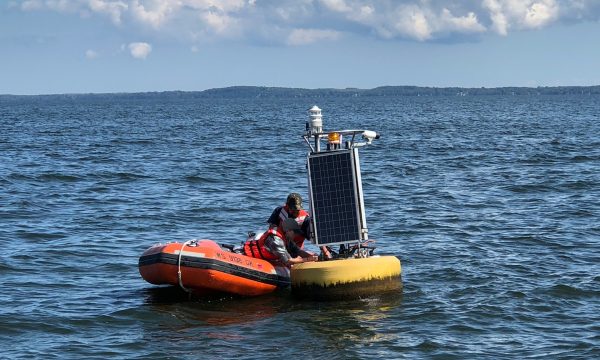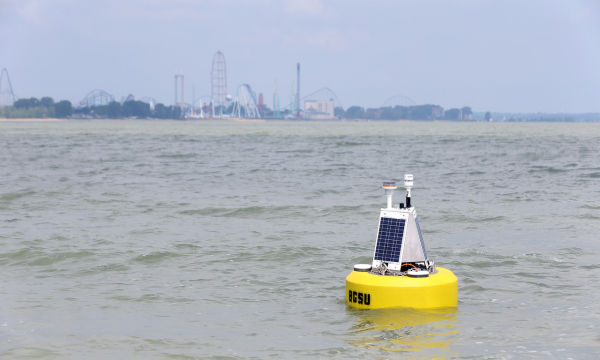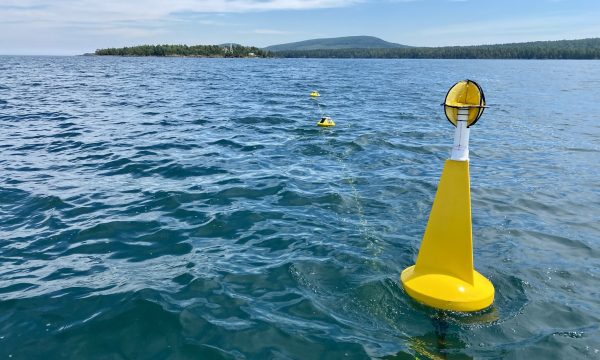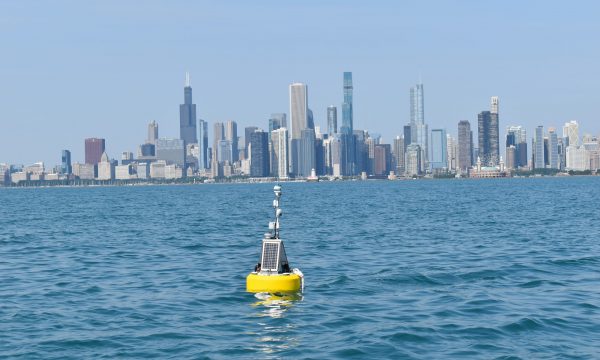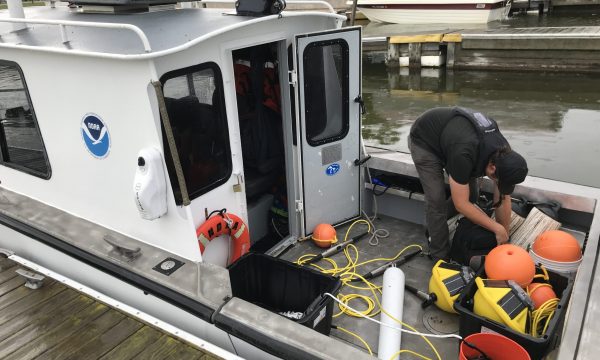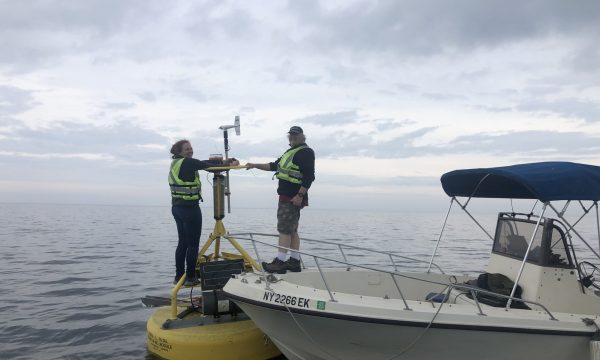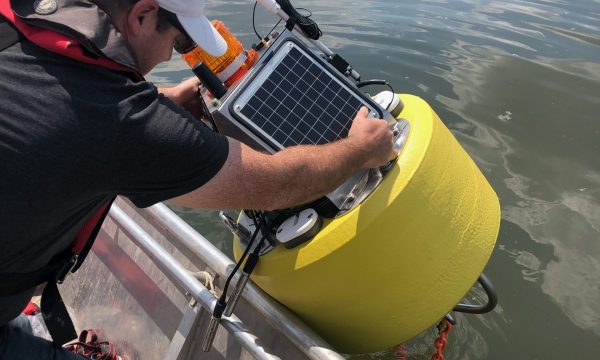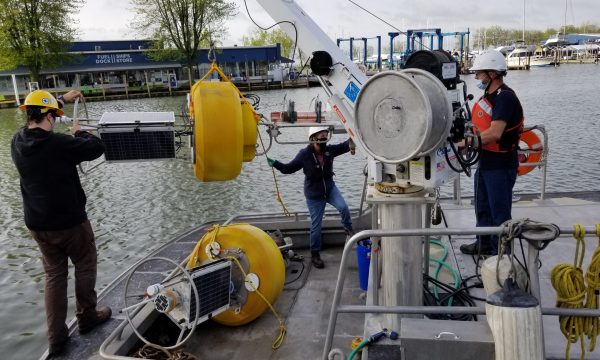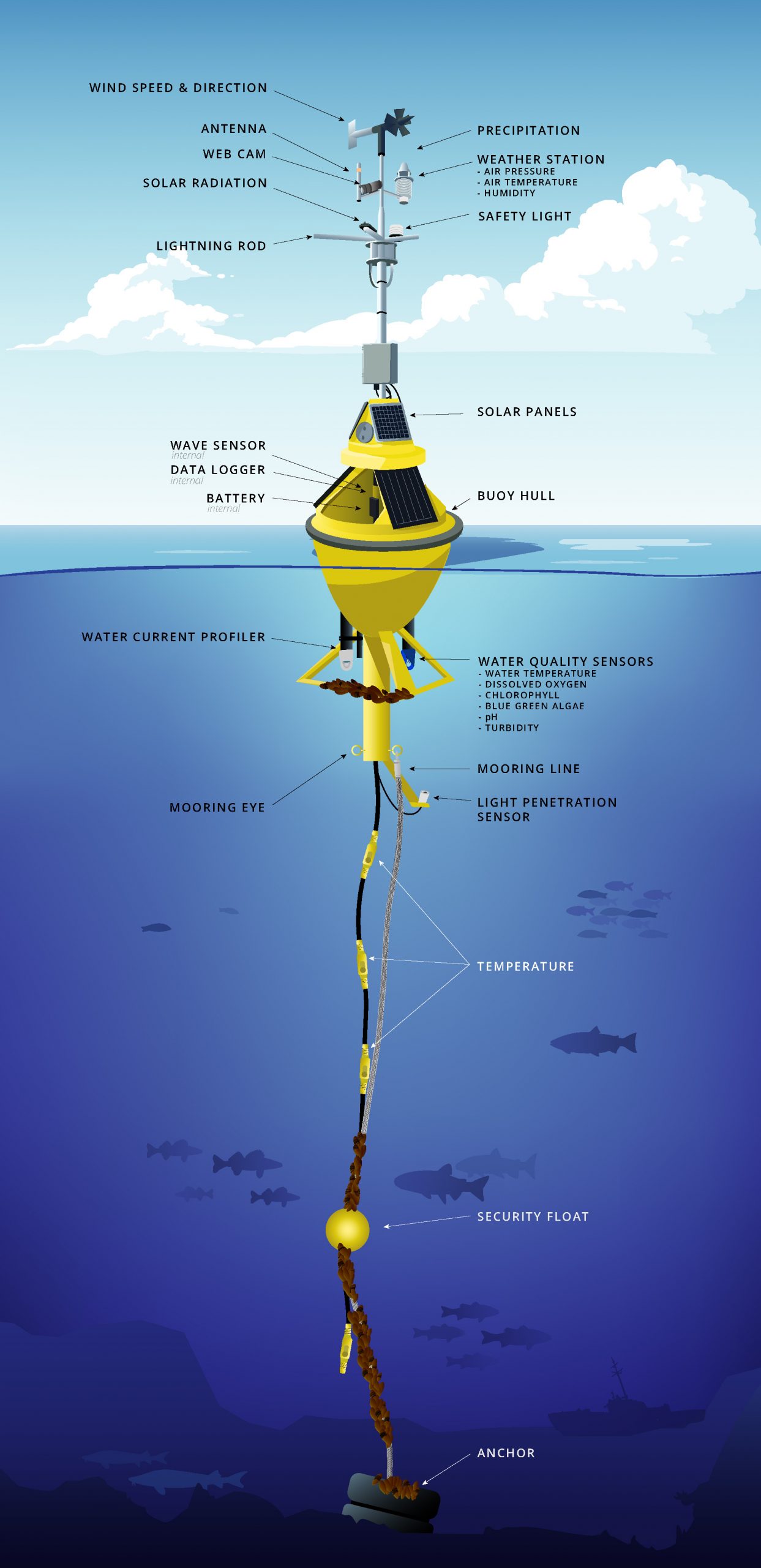Buoys
Buoys are the backbone of the Great Lakes observing network, giving us crucial information about the always changing lakes.
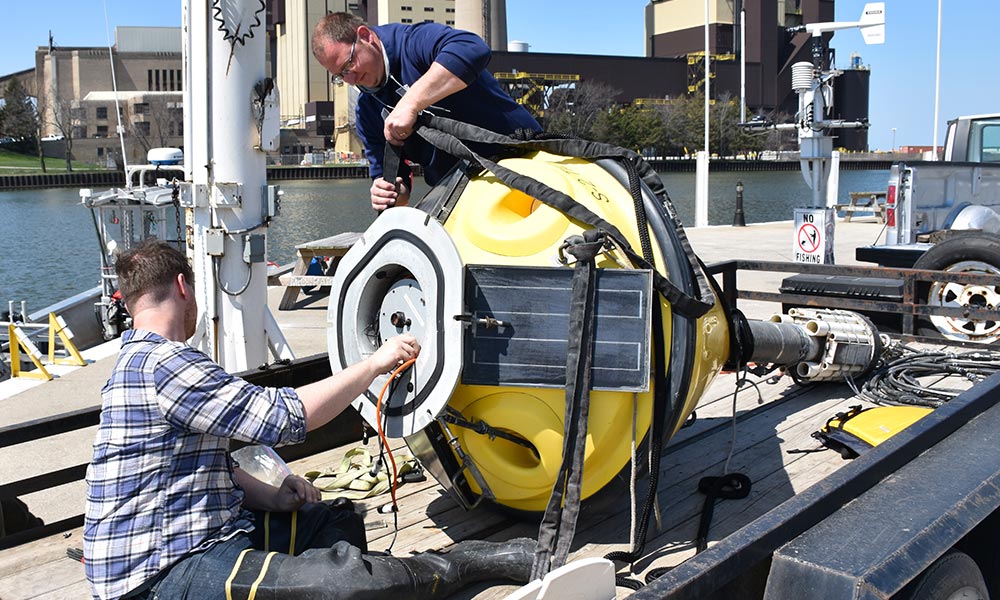
These floating sensor platforms are known for their versatility and being relatively easy to deploy and maintain. Depending on how they are configured, buoys can monitor dozens of weather and water conditions like:
- Physical parameters (including wind speed, water temperature, and wave height)
- Chemical and biological parameters (including pH, chlorophyll, and turbidity)
Buoys can be left free-floating to drift with the lake currents or be anchored to the lakefloor to float at the surface or underwater, depending on where they need to take measurements.
If you swam up to a surface buoy, above the water you might see:
- A large, floating hull made of foam or fiberglass
- Weather sensors to take measurements of atmospheric conditions
- Solar panels to power the sensors, data loggers and communication systems to send the data
- A safety light that keeps boaters from hitting the buoy
Below the water, you might see:
- A mooring line to keep the buoy in place
- Water sensors
- Subsurface floats to keep the mooring line out of the mud
- A concrete anchor
Buoys help researchers, beachgoers, anglers, water treatment plant managers, boaters, and others make informed decisions about their interaction with the lakes.
In the Great Lakes region, due to weather conditions, it takes a community of dedicated professionals in the government, at universities, and at private companies to take care of them, deploying them every spring and recovering them every fall.
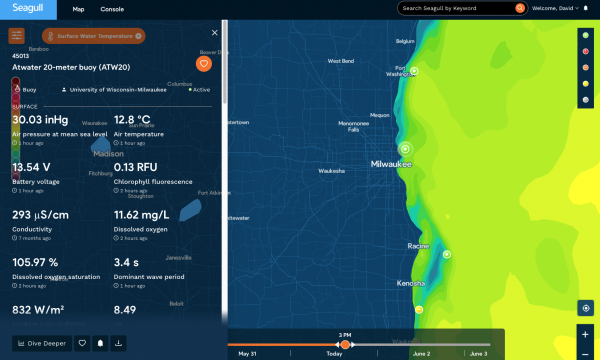
Related Posts
Monitoring data from two research reserves is now live on Seagull, with a buoy on the way
It started with a conversation about a buoy, but it resulted in much more....
Low-cost, open-source Panther buoys are now on Seagull
Todd Miller, a researcher at UW-Milwaukee’s Zilber School of Public Health has been leading...
University of Wisconsin-Milwaukee connects LoRaWAN buoy to Seagull
One of the perennial challenges for Great Lakes monitoring is getting good, reliable, low-cost...
